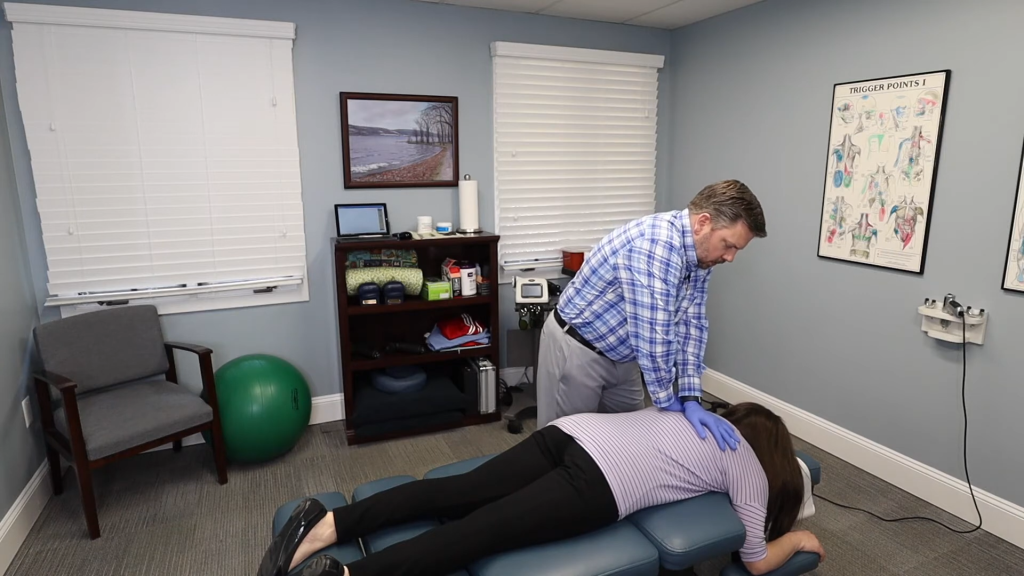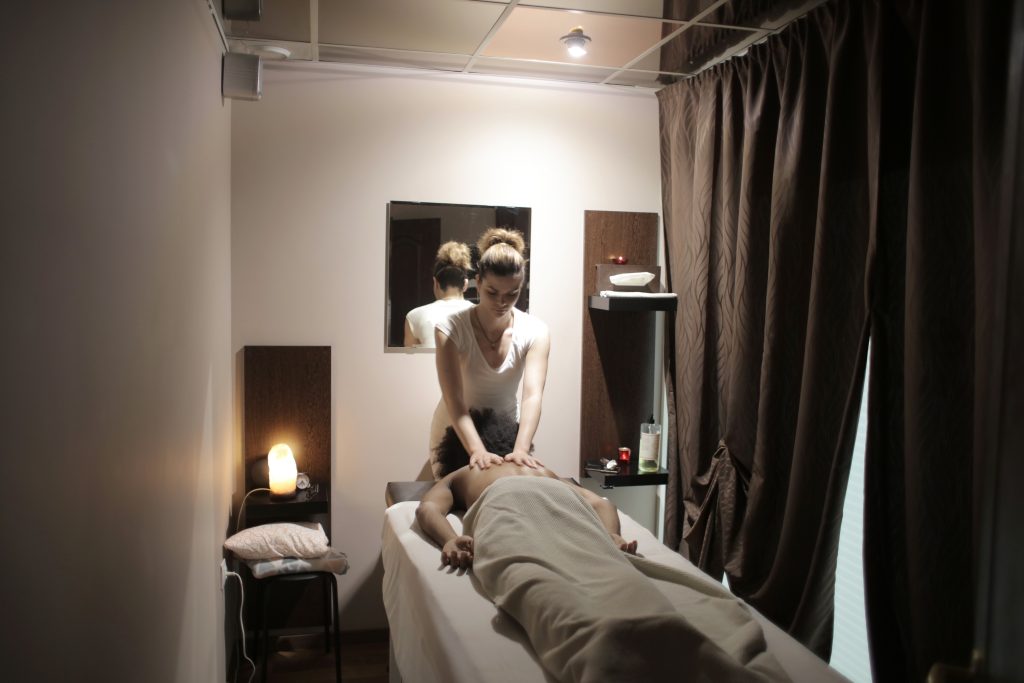Discover whether chiropractic or physical therapy can provide relief for postpartum back pain.
Can Chiropractic or Physical Therapy Help with Postpartum Back Pain Recovery?
As any new mom can attest, the journey through pregnancy and childbirth is a miraculous one. However, this incredible process can also put immense strain on the body, particularly the back. Postpartum back pain is a common issue that many mothers face after giving birth. But fear not, help is at hand! In this article, we will explore two popular treatments for postpartum back pain: chiropractic care and physical therapy. So, let’s dive in and find out how these holistic approaches can help you on your path to recovery!

Understanding Postpartum Back Pain
Before we delve into the nitty-gritty of chiropractic care and physical therapy, let’s first shed some light on the causes and characteristics of postpartum back pain. After carrying and delivering a precious bundle of joy, it’s only natural that your body needs some time to recover. However, during this recovery period, many moms experience back pain that can range from mild discomfort to downright excruciating.
Postpartum back pain is a common complaint among new mothers, affecting their daily activities and overall well-being. It can make it challenging to care for their newborns, perform household chores, or even enjoy simple activities like walking or sitting comfortably. Understanding the causes and duration of postpartum back pain is essential in finding effective solutions to alleviate the discomfort and promote a healthy recovery.
Causes of Postpartum Back Pain
There are several factors that contribute to postpartum back pain. Firstly, the hormone relaxin, which helps loosen the ligaments during pregnancy and childbirth, can continue to wreak havoc on your joints postpartum. While relaxin is crucial for facilitating a smooth delivery, its presence in the body after childbirth can lead to joint instability and increased vulnerability to back pain.
In addition to hormonal changes, the strain of carrying your baby bump for nine months can lead to muscle imbalances and weakened core strength, putting excessive pressure on your back. The weight distribution during pregnancy shifts, causing the spine to adapt and compensate for the growing belly. This adjustment can lead to misalignments in the spine, contributing to postpartum back pain.
Furthermore, the act of giving birth itself can put immense stress on the back. The pushing and straining during labor can strain the muscles and ligaments, leading to postpartum back pain. The use of forceps or vacuum extraction during delivery can also contribute to back pain, as these interventions can put additional pressure on the spine and surrounding tissues.
Duration and Intensity of Postpartum Back Pain
Postpartum back pain can vary widely in terms of duration and intensity. Some lucky mothers may only experience mild discomfort that subsides within a few weeks, while others endure persistent pain for several months. The intensity of the pain can also fluctuate, making it challenging to predict how your back will feel on any given day.
It is important to note that postpartum back pain is not something to be ignored or dismissed as a normal part of motherhood. While some level of discomfort is expected during the postpartum period, severe or prolonged pain should be addressed to prevent further complications and ensure a full recovery. Seeking professional help from chiropractors, physical therapists, or other healthcare providers can provide the necessary guidance and treatment options to manage and alleviate postpartum back pain.
The Role of Chiropractic Care in Postpartum Recovery
Now that we have a better understanding of postpartum back pain, let’s explore how chiropractic care can play a vital role in your recovery journey.
After giving birth, many women experience discomfort and pain in their backs. This can be attributed to the physical strain of pregnancy, labor, and delivery. The body goes through significant changes during this time, including hormonal shifts, weight redistribution, and the stretching of ligaments. All of these factors can contribute to misalignments in the spine, leading to postpartum back pain.
Chiropractic care focuses on the belief that a properly aligned spine enhances the body’s natural ability to heal itself. Through gentle adjustments, chiropractors aim to bring your spine back into alignment, relieving pressure on the nerves and reducing inflammation. By addressing the underlying misalignments, chiropractic care can provide long-term relief from postpartum back pain.
Principles of Chiropractic Care
Chiropractic care is based on the principle that the body is a self-healing organism. It recognizes that the nervous system, which is housed within the spine, controls and coordinates all bodily functions. When the spine is misaligned, it can interfere with the proper functioning of the nervous system, leading to various health issues.
During pregnancy, the body undergoes numerous changes to accommodate the growing baby. These changes can cause misalignments in the spine, affecting the nervous system’s ability to communicate effectively with the rest of the body. Chiropractic care aims to restore proper alignment to the spine, allowing the nervous system to function optimally.
This holistic approach promotes overall wellness and can target the root cause of your postpartum back pain. By addressing the underlying misalignments, chiropractic care not only provides relief from pain but also supports the body’s natural healing processes.
Chiropractic Techniques for Back Pain Relief
Chiropractors employ various techniques to alleviate back pain and promote postpartum recovery. One of the most common techniques is spinal manipulation, also known as adjustments. This involves the use of controlled force to restore proper alignment to the spine. By applying precise and gentle pressure, chiropractors can realign the vertebrae, relieving pressure on the nerves and reducing inflammation.
In addition to spinal adjustments, chiropractors may also utilize soft tissue therapies to provide relief from postpartum back pain. These therapies include massage and stretching techniques, which target tight muscles and improve flexibility. Massage helps to relax tense muscles, reduce inflammation, and improve blood circulation, promoting healing in the affected areas. Stretching exercises can also help to improve range of motion and restore muscle balance.
Chiropractic care is a safe and non-invasive option for postpartum recovery. It offers a natural approach to pain relief and supports the body’s healing processes. By addressing the underlying misalignments in the spine, chiropractors can help women regain their strength, mobility, and overall well-being after giving birth.
The Role of Physical Therapy in Postpartum Recovery
Now, let’s turn our attention to physical therapy and how it can help you bid farewell to your postpartum back pain.
Postpartum recovery is a crucial period for new mothers, as they navigate the physical and emotional changes that come with childbirth. One common issue that many women face during this time is back pain. The strain of pregnancy, labor, and delivery can take a toll on the body, particularly the lower back. This is where physical therapy comes in.
Principles of Physical Therapy
Physical therapy aims to restore function, reduce pain, and improve movement through a variety of interventions. It involves a customized treatment plan that may include exercises, stretches, manual therapy, and education on proper body mechanics. The goal is to empower you to take an active role in your own recovery.
When you visit a physical therapist, they will conduct a thorough assessment to understand the specific nature of your back pain. They will take into account factors such as the type and intensity of pain, any limitations in movement, and your overall health and fitness level. This information will guide them in developing a personalized treatment plan tailored to your needs.
Physical therapy sessions typically involve a combination of exercises and stretches that target the core muscles, which play a crucial role in supporting the spine. Strengthening these muscles can help alleviate back pain and improve stability. Your physical therapist will guide you through these exercises, ensuring proper form and technique to maximize their effectiveness.
Physical Therapy Techniques for Back Pain Relief
Physical therapists employ a range of techniques to address postpartum back pain. They may use specific exercises to strengthen the core muscles and improve stability. Manual therapy techniques, such as joint mobilization and soft tissue massage, can also provide much-needed relief. Additionally, education on proper posture and body mechanics will equip you with tools to prevent future back pain.
Joint mobilization is a hands-on technique that involves gentle movements of the joints to improve their range of motion. This can help reduce stiffness and promote healing in the affected areas. Soft tissue massage, on the other hand, targets the muscles and surrounding tissues to release tension and promote relaxation. These manual therapy techniques are often combined with therapeutic exercises to provide comprehensive relief.
Proper body mechanics and posture play a crucial role in preventing and managing back pain. Your physical therapist will educate you on how to maintain good posture while performing daily activities, such as lifting your baby, breastfeeding, and carrying out household chores. They will teach you techniques to engage your core muscles and distribute the load evenly, reducing strain on your back.
In addition to the in-person sessions, physical therapists may also provide you with a home exercise program to continue your progress outside of the clinic. This program will include exercises and stretches that you can perform on your own, with clear instructions on frequency and intensity. Consistency is key in achieving long-term relief and preventing future back pain.
Remember, every individual’s postpartum recovery journey is unique, and the duration of physical therapy treatment may vary. It is important to communicate openly with your physical therapist about your progress, any changes in your symptoms, and any concerns you may have. Together, you can work towards a pain-free and healthy postpartum recovery.
Comparing Chiropractic Care and Physical Therapy
Now that we’ve explored the individual benefits of chiropractic care and physical therapy, let’s compare these two approaches and see how they measure up against each other in the realm of postpartum back pain relief.

Effectiveness in Treating Postpartum Back Pain
Both chiropractic care and physical therapy have proven to be effective in relieving postpartum back pain. However, the choice between the two may depend on your personal preferences and the severity of your condition. Some women find chiropractic adjustments to be more helpful, while others prefer the hands-on approach of physical therapy.
Safety and Risks Involved
When it comes to safety, both chiropractic care and physical therapy are generally considered safe for postpartum women. However, it’s crucial to choose a qualified and experienced practitioner to ensure the utmost care and expertise. Always consult with your healthcare provider before starting any new treatment.
Making the Right Choice for Your Postpartum Recovery
Now that you’re armed with knowledge about chiropractic care and physical therapy, how do you determine which one is right for you? Here are some factors to consider when making your decision:
Factors to Consider When Choosing a Treatment
The severity of your back pain, your personal preferences, and your healthcare provider’s recommendations should all be taken into account. If you prefer a non-invasive approach, chiropractic care might be your best bet. On the other hand, if you value an active role in your recovery, physical therapy could be the perfect fit.
Consulting with Healthcare Professionals
Lastly, consulting with healthcare professionals is crucial. They can evaluate your condition, provide expert advice, and guide you towards the most suitable treatment option. Don’t hesitate to seek their guidance and ask questions.
In conclusion, whether you choose chiropractic care or physical therapy, both can be immensely beneficial in your postpartum back pain recovery journey. These holistic approaches provide a much-needed ray of sunshine amidst the challenges of motherhood. So, don’t let that nagging back pain dampen your spirits. Take the leap, embrace the healing power of chiropractic care or physical therapy, and embark on the road to a pain-free and joyful motherhood!



